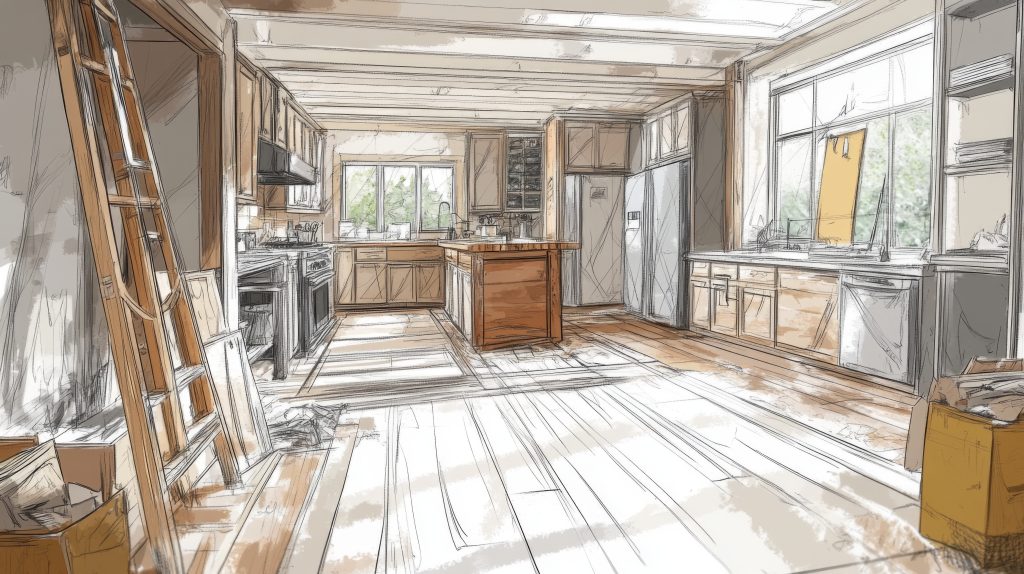30 April 2025
The Importance of Lighting in Your Kitchen Design
Lighting Your Kitchen: A Key Element in Successful Design
When it comes to designing your dream kitchen, lighting is one of the most important factors to consider. Not only does the right lighting improve functionality, but it also sets the tone for the entire space. Whether you’re preparing meals, hosting guests, or simply enjoying family time, the proper lighting can make all the difference. In this article, we’ll take an in-depth look at how to plan and execute lighting in your kitchen design, ensuring both style and practicality.

1. Task Lighting: Precision Where You Need It Most
Task lighting is essential for providing focused light in areas where you perform specific tasks, such as cooking, chopping, or cleaning. This type of lighting should illuminate workspaces like countertops, stovetops, sinks, and islands, ensuring that your work areas are well-lit and functional.
What to Use:
- Under-Cabinet Lighting: This is one of the best solutions for task lighting, as it casts light directly on countertops without creating harsh shadows.
- Pendant Lights: Over islands or dining areas, pendant lights provide focused light for work surfaces and create a design focal point.
- Recessed Lighting: Installed above key task areas, recessed lighting can provide a clean, unobtrusive look while offering bright, direct illumination.
Why It’s Important:
Without adequate task lighting, working in the kitchen can feel frustrating or even unsafe, especially when performing precision tasks like chopping vegetables or reading recipes. Bright task lighting reduces eye strain and ensures a safe environment for cooking.
2. Ambient Lighting: Setting the Mood and Tone
Ambient lighting is the foundation of your kitchen’s lighting plan. This general, overall lighting creates a warm, inviting atmosphere that’s perfect for day-to-day use, including casual dining, family gatherings, and relaxation.
What to Use:
- Ceiling Lights: Central overhead lights, whether recessed, flush-mounted, or a chandelier, can create broad illumination in your kitchen.
- Track Lighting: Flexible and modern, track lighting can cover various sections of the kitchen while maintaining a clean look.
- Natural Light: Whenever possible, maximize natural light with large windows or skylights. Not only does this create an airy, open feel, but it also saves energy during the day.
Why It’s Important:
Ambient lighting is about creating an inviting and comfortable environment. When done right, it provides even coverage of the space without glare, ensuring your kitchen feels bright and open, even during the evenings or cloudy days.
3. Accent Lighting: Adding Style and Visual Interest
Accent lighting is used to highlight specific design elements in your kitchen, such as decorative features, architectural details, or unique design choices. This is where creativity can shine, allowing you to emphasize the things that make your kitchen stand out.
What to Use:
- Under-Cabinet LED Strips: Subtle, yet effective, LED strips placed under cabinets or shelves can bring attention to the backsplash, countertops, or decorative objects without overwhelming the space.
- Spotlights: Adjustable spotlights can be directed at art pieces, sculptures, or even unique cabinetry, helping to highlight the beauty of your kitchen.
- Glass Cabinet Lighting: If you have glass-front cabinets or shelves, consider placing small lights inside to showcase your dinnerware, glassware, or collectibles.
Why It’s Important:
Accent lighting serves not only a functional purpose but also an aesthetic one. It draws the eye to certain parts of your kitchen and adds an extra layer of sophistication and style. It’s a great way to personalize your space and make it feel truly yours.
4. Consider the Impact of Dimming Controls
Lighting flexibility is key to a functional kitchen, and one of the best ways to achieve this is through dimmer switches. Whether you’re hosting a dinner party and need soft, warm lighting or preparing a meal and need bright, focused light, dimmers allow you to adjust the intensity to suit the task at hand.
What to Use:
- Dimmer Switches: Install dimmer switches for overhead lighting, task lights, and accent lights to allow full control over your kitchen’s ambiance.
- Smart Lighting: Smart dimmers or bulbs can be controlled through apps or voice commands, giving you even more flexibility to adjust lighting throughout the day.
Why It’s Important:
Having control over your lighting makes your kitchen adaptable to various activities, from cooking to entertaining. It also helps you save energy by using only the light you need.
5. Energy-Efficiency: Go Green with LED Lighting
As energy costs rise and sustainability becomes more important, it’s essential to consider the energy efficiency of your lighting. LED lights are an excellent choice for both task and ambient lighting because they consume far less energy than traditional incandescent bulbs and have a longer lifespan.
What to Use:
- LED Bulbs: Switch out standard bulbs for LED options. These are available in a wide variety of styles, from task lighting fixtures to ambient lights.
- Smart LEDs: These bulbs can be adjusted for color temperature and brightness, allowing you to tailor the lighting to your preferences while saving on energy costs.
Why It’s Important:
Energy-efficient lighting helps reduce your kitchen’s overall energy consumption while contributing to a more sustainable home. Over time, the savings on your utility bills will also make the initial investment in LED lighting worthwhile.
Conclusion: Lighting for Function and Beauty
When planning your kitchen design, lighting is a crucial element that affects both the functionality and aesthetics of your space. By incorporating the right mix of task, ambient, and accent lighting, you can create a kitchen that is not only practical but also visually appealing. Don’t forget to add flexibility with dimmers or smart lighting, and choose energy-efficient LED solutions to save on energy costs while enhancing your kitchen’s atmosphere.
Remember, the right lighting transforms a kitchen from just a cooking space into the heart of the home—a place where design, functionality, and comfort come together seamlessly.
